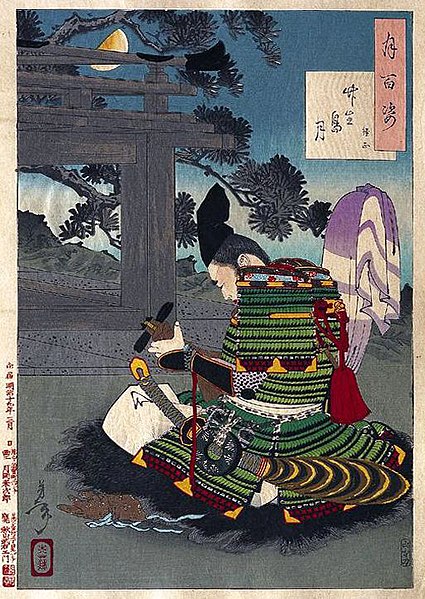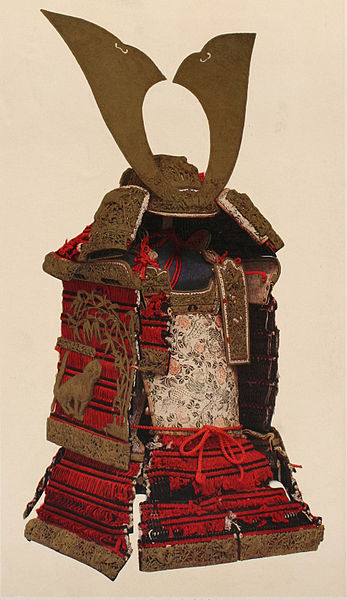The ō-yoroi (大鎧) is a prominent example of early Japanese armor worn by the samurai class of feudal Japan. The term ō-yoroi means "great armor."
A samurai wearing an ō-yoroi; two of the large skirt-like kusazuri can be seen—Ō-Yoroi had four kusazuri, unlike other armour of the era, which usually had seven kusazuri.
Ō-yoroi, Kamakura period, 13th–14th century, National Treasure, Kasuga grand shrine
Samurai on horseback wearing an ō-yoroi-the large skirt-like kusazuri shows that this is an ō-yoroi.
Samurai ō-yoroi armour from the Tokyo National Museum
Scholars agree that Japanese armour first appeared in the 4th century, with the discovery of the cuirass and basic helmets in graves. During the Heian period (794-1185), the unique Japanese samurai armour ō-yoroi and dō-maru appeared. The Japanese cuirass evolved into the more familiar style of body armour worn by the samurai known as the dou or dō, with the use of leather straps (nerigawa), and lacquer for weatherproofing. Leather and/or iron scales were also used to construct samurai armours, with leather and eventually silk lace used to connect the individual scales (kozane) of these cuirasses.
Ō-yoroi, Kamakura period, 13th-14th century, National Treasure, Kasuga Grand Shrine.
Dō-maru, Muromachi period, 15th century, Important Cultural Property, Tokyo National Museum
Gusoku Armour from the Kii Tokugawa Family. Edo period, 17th century. Minneapolis Institute of Art. In 2009, it sold for $602,500, the highest bid in Christie's history for a Japanese armour.
Gusoku Armour with a medieval revival style. Cloud dragon is drawn using maki-e technique. Edo period, 19th century, Tokyo Fuji Art Museum







